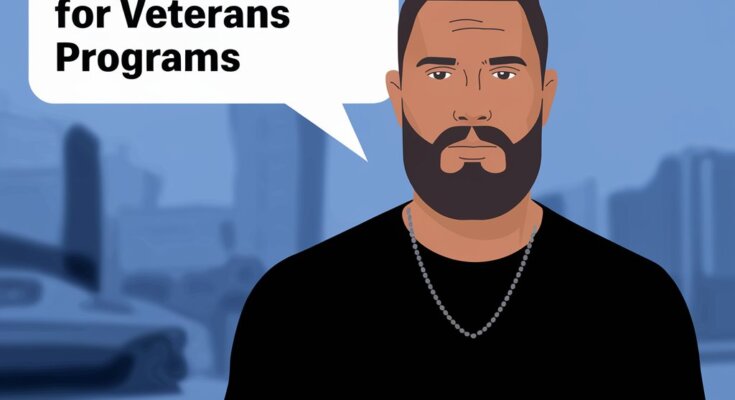Writing a grant proposal for veterans programs can seem like a daunting task, but it doesn’t have to be! Whether you’re a seasoned nonprofit professional or a newcomer to the world of grants, this guide will break down the process into simple, actionable steps.
We’ll explore key strategies that will help your organization stand out to funders and successfully secure the financial support needed to make a difference in the lives of our veterans.
So, let’s dive in and discover how to craft a compelling grant proposal that resonates with funding organizations.
Understanding the Basics of Grant Proposals
Before we jump into the nitty-gritty of writing, it’s crucial to understand what a grant proposal is. In essence, a grant proposal is a detailed request for funding from a government agency, foundation, or other organization.
It outlines your project, its objectives, the amount of funding you need, and how you plan to use that funding to benefit veterans.
A well-structured grant proposal typically includes the following components:
- Executive Summary: A concise overview of your proposal.
- Statement of Need: A compelling description of the problem you aim to address.
- Project Description: Detailed information about your project, including goals, objectives, and activities.
- Budget: A breakdown of how funds will be allocated.
- Organization Information: Background on your organization and its capacity to manage the project.
- Conclusion: A call to action, urging funders to support your initiative.
Step 1: Research Funding Opportunities
The first step in writing a successful grant proposal is to identify suitable funding sources. There are numerous organizations that provide grants specifically for veterans programs, including:
- Federal Agencies: Organizations like the U.S. Department of Veterans Affairs (VA) offer funding opportunities for programs supporting veterans.
- Foundations: Many private foundations have dedicated initiatives aimed at helping veterans.
- Corporate Sponsorships: Some companies provide grants as part of their corporate social responsibility (CSR) efforts.
To find funding opportunities, start by conducting thorough research. Use online databases such as Grants.gov or Foundation Center to search for grants that align with your mission.
Once you’ve identified potential funders, read their guidelines carefully to understand their priorities and preferences.
Step 2: Craft a Compelling Executive Summary
The executive summary is a critical component of your grant proposal. It serves as a snapshot of your entire project and should grab the reader’s attention.
Here’s how to write an effective executive summary:
- Start with a Hook: Begin with a powerful statistic or story that illustrates the need for your program. For instance, “Every day, over 22 veterans take their own lives due to mental health struggles. Our program aims to change this alarming statistic.”
- Provide Context: Briefly describe your organization and its mission. Highlight your experience working with veterans and any successes you’ve achieved in the past.
- Outline the Project: Clearly state the project’s goals and objectives, the amount of funding requested, and how you plan to utilize the funds.
- Make It Engaging: Use clear and persuasive language that resonates with potential funders. Remember, your goal is to make them feel excited about your project!
Example:
“[Your Organization] has been dedicated to serving veterans for over a decade, providing vital resources and support to those who have sacrificed for our country.
Our new initiative, ‘Pathway to Healing,’ aims to provide mental health services to veterans struggling with PTSD. We are seeking $50,000 to implement this program, which will ultimately save lives and foster community engagement.”
Step 3: Articulate the Need
The statement of need is arguably one of the most critical sections of your grant proposal. It should explain why your project is essential and provide evidence to support your claims. Here’s how to effectively articulate the need:
- Use Data and Statistics: Incorporate relevant statistics that highlight the challenges veterans face. For instance, “According to the National Alliance on Mental Illness, nearly one in five veterans suffers from a mental health condition.”
- Personalize the Issue: Share stories or testimonials from veterans who have experienced the challenges your program aims to address. This personal touch can make your proposal more relatable and compelling.
Example:
“Meet John, a combat veteran who returned home with invisible wounds. Struggling with PTSD and isolation, John felt he had no one to turn to. Our program will provide a safe space for veterans like John to connect, share their experiences, and receive the support they need to heal.”
Step 4: Describe Your Project
In the project description section, you’ll detail how your program will address the needs identified earlier. This is where you can get into the specifics:
- Goals and Objectives: Clearly outline the primary goals of your project and break them down into measurable objectives. For example, “Our goal is to reduce the incidence of veteran suicides by 20% over the next two years through targeted mental health services.”
- Activities and Timeline: Describe the activities you will implement to achieve your objectives. Include a timeline for each activity to show how you plan to execute the project effectively.
- Evaluation: Discuss how you will measure the success of your project. Funders want to see that you have a plan for evaluating the effectiveness of your program. You might use surveys, interviews, or data analysis to assess outcomes.
Step 5: Create a Detailed Budget
A well-thought-out budget is essential for any grant proposal. It shows funders that you’ve carefully considered the financial aspects of your project. Here are some tips for creating a strong budget:
- Break Down Costs: Provide a detailed breakdown of all expenses associated with your project, including personnel, materials, and overhead costs.
- Justify Your Expenses: Explain why each cost is necessary for the success of the project. Funders appreciate transparency and justification.
- Include In-Kind Contributions: If your organization will provide any in-kind contributions (e.g., volunteer time, donated materials), be sure to include these in your budget to demonstrate your commitment.
Example:
Total Budget: $50,000
- Personnel Costs: $30,000 (Mental health professionals, program coordinator)
- Materials: $10,000 (Therapeutic resources, promotional materials)
- Overhead: $5,000 (Utilities, office supplies)
- In-Kind Contributions: $5,000 (Volunteers providing support)”
Step 6: Highlight Your Organization’s Capacity
In the organization information section, you’ll want to provide background on your nonprofit and why you are qualified to undertake this project. Consider including:
- Mission Statement: Share your organization’s mission and how it aligns with the goals of your project.
- Track Record: Highlight past successes in managing similar projects or serving veterans. Include any awards or recognitions your organization has received.
- Staff Expertise: Introduce key staff members involved in the project and outline their qualifications and experience.
A Veteran’s Journey
To illustrate the impact of veterans programs, let’s take a moment to share a story about a veteran named Lisa.
Lisa served in the Army for five years and returned home with challenges that many veterans face. After her service, she struggled with finding stable employment and often felt isolated from her community. Fortunately, she discovered a local nonprofit that offered a program specifically designed for veterans.
Through this program, Lisa was provided with career counseling, resume workshops, and networking opportunities. She was paired with a mentor who helped her navigate the job market and develop the confidence she needed to succeed.
With the support of the program, Lisa not only found a fulfilling job but also formed lasting friendships with fellow veterans. Her story is a testament to the transformative power of well-funded veterans programs. By writing strong grant proposals, nonprofits can create opportunities for veterans like Lisa to thrive and reintegrate into their communities.
Step 7: Conclude with a Strong Call to Action
The conclusion of your grant proposal is your chance to reiterate the importance of your project and inspire funders to take action. Remind them of the needs you’ve addressed and the potential impact of their funding. You might say:
“By funding our program, you are investing in the lives of veterans who have served our country. Together, we can create a supportive community that empowers veterans to heal and succeed.”
Final Touches: Review and Edit
Before submitting your grant proposal, take the time to review and edit. Look for clarity, consistency, and any grammatical errors. It may be helpful to have a colleague review the proposal as well, providing fresh eyes on your work.
Conclusion:
Writing a grant proposal for veterans programs can be an impactful way to secure funding and support for those who have served our nation.
By following these steps and applying the strategies outlined above, you can create a compelling proposal that resonates with funders.
If you found this guide helpful and want to stay informed about grant writing, opportunities, and resources, subscribe to the Nonprofit Navigators Newsletter!
You’ll gain access to exclusive tips, job opportunities, grant announcements, webinars, and events designed to help your nonprofit thrive.




